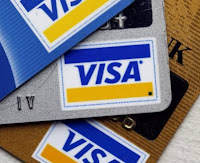When Nokia announced the end of the road for Nokia money earlier this year in March (Read
here), it did not come as a major surprise for many practitioners in the industry. The sad thing was that it had to take the best part of five years and tens of millions of dollars for the realisation to set in.
I was doubtful about the ability of Nokia to successfully enter the mobile banking space in a number of blog-entries on this blog (
Mar 2009 and again in
Sept 2009) and so were others. What has gone unnoticed was that Nokia was involved in a number of mobile payment initiatives prior to Nokia money, all of them failed. Most famous venture was the Meridea initiative started in about 2003 with other partners (including Accenture, Sampo and venture capital firms). Meridea filed for bankruptcy in Aug 2007. (Read
here).
At about the same time (in 2005 until 2007) a number of groups within Nokia were planning mobile payment initiatives. These groups ranged from teams based in Helsinki, Munich and India. The merger of the Nokia infrastructure group with Siemens, killed some of the initiatives; but the India plans prevailed. After considering a number of approaches, Nokia invested $70m in Obopay in March 2007 (Read
here) and selected the US company (with relatively little experience in emerging markets) as their technology partner. I believe that this was the first mistake - selecting a partner with little applicable experience.
In Nov 2009 Teppo Paavola (vice president mobile financial services) announced that the services will be commercially available in Q1 2010 (Read
here). Only a pilot was deployed in Pune with Yes bank during Feb 2011. Soon afterwards, Nokia announced that it would acquire Obopay India operations (Read
here). This basically meant that all operational expenses would be for Nokia's account going into the future. While this might not have looked as a mature mistake, it created a cash-flow commitment into the future, that would drain resources for the next few years.
Soon afterwards, Nokia realised that it would be difficult to follow a similar strategy into other emerging markets. An approach where Nokia would rather partner with successful deployments in other regions became apparent with the announcement of a relationship with MCB in Pakistan (July 2011) (Read
here). MCB successfully launched their own mobile banking service on the Fundamo platform and has won a number of awards for this service on global platforms.
Nokia finally launched the service commercially in India in Nov 2011 (Read
here) - almost two years late. The service was a well designed consumer-facing service with rich features running on any Nokia phone (independent of the carrier). The service reportedly started showing good traction by the end of the year, but was still at negative cashflow only a few months later when the plug was pulled.
This is really a very sad story, specifically because the initiative was suspended just at the point when the possibility of a successful business was actually real. I think that many lessons can be learned from this tragedy, and maybe history will show that this would be the main benefits that Nokia money will bring to the industry. For me, the two main lessons are: not to pick an inexperienced partner and to be careful about major, future cashflow commitments - especially if these are motivated on too ambitious targets.
 Most of us belong to a group that are fascinated by new payment technology and also (often) love gadgets. This is why it comes so naturally to us to consider using our phone to tap and go. For many others this is quite a strange concept, if we want think about it for a while. In the mind of the average person, this is quite a strange way to transfer payment.
Most of us belong to a group that are fascinated by new payment technology and also (often) love gadgets. This is why it comes so naturally to us to consider using our phone to tap and go. For many others this is quite a strange concept, if we want think about it for a while. In the mind of the average person, this is quite a strange way to transfer payment.







































